Fentanyl, the portrait of a mass murderer
It’s the big threat. A cheap, white powder — 50 times more powerful than heroin — which kills more than 70,000 people each year in the United States and countless others across the rest of the Western Hemisphere. EL PAÍS, in a long-term investigation that spanned two continents and included interviews with anti-drug czars in the U.S. and China, visited the clandestine laboratories in Sinaloa, where fentanyl is manufactured. In the vicinity of these Mexican labs, addicts serve as guinea pigs for drug traffickers. This newspaper has gathered testimonies about how this lethal substance crosses the border to the north and spreads like a plague through the streets of the most powerful country in the world. The trafficking of fentanyl is part of a global network with one foot in China, which the White House has declared war on
Life — or what’s left of it — stops on Kensington Avenue every 10 minutes or so. It happens when the subway hums along the elevated tracks, a blue steel structure that flies over this Philadelphia street. The roar doesn’t allow you to think… but, at least for that moment, the problems at ground zero of the fentanyl crisis in the United States are put on hold.
Afterward, the addicts and the volunteers who help them, the dealers and the police, the YouTubers and the tourists attracted by the news, the armed merchants and the residents of this gigantic open-air drug market will return to the free-for-all fight under the tracks. Hundreds of people who are addicted to the powerful opioid — which is 50 times stronger than heroin — live and die on these streets. Some, like Daniel — who lost all his toes due to the cold — have been wandering around them for years. Others don’t make it past their first month here.
The fate of all of them begins about 2,500 miles away, next to a different set of train tracks: those that cross Culiacán, in the heart of Mexican drug trafficking territory. There, a fentanyl cook — who calls himself Miguel — carries out macabre experiments on a handful of consumers, who test the merchandise before it’s shipped off to the United States. They start with one dose: one third pure and the rest, cut. The “human guinea pigs” inject it in front of him. If they say, “No, it didn’t rock me, it didn’t put me to sleep, add more,” the percentage increases. Miguel assures EL PAÍS that no one has ever died from this process.
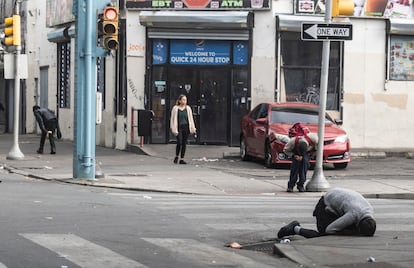
Culiacán, the capital of the Mexican state of Sinaloa, and Philadelphia, the symbol of the largest drug crisis in the history of the United States, are two of the stations along the journey of a dose of fentanyl. And more than 11,000 miles separate Daniel’s needle from the Chinese laboratories in Wuhan, where the chemical precursors necessary to synthesize the drug are manufactured. That cheap white powder that is injected, smoked, or taken in pill form was responsible for two-thirds of the 107,888 overdose deaths recorded in the United States in 2022 — an all-time record. There are about 295 deaths a day, as if a major plane crashed at a New York City airport every morning.
With the aim of deciphering all the aspects of a global problem, EL PAÍS has followed the trail through eight cities, three countries and two continents, tracking the most effective serial killer of American adults between 18 and 49-years-old. It murders them more than traffic accidents and firearms.
It’s a trip with stops in the slums where drug traffickers cook fentanyl and in the ports along the Pacific, corroded by corruption. It examines the propaganda machinery of Beijing and the Washington offices where the strategists behind a losing war are at work. It sneaks across the border with Mexico — where, in 2022, the authorities seized 370 million lethal doses, more than enough to kill the entire population of the world’s leading power — and climbs the roads along which the trucks take it, hidden among bean jars, to the streets of Philadelphia or San Francisco, the two cities that top the rankings for fentanyl deaths in the world.
1. In the narco’s den: a “cook” in Sinaloa

Miguel is what U.S. authorities define as a “qualified chemist.” He’s used by the Sinaloa Cartel for the large-scale production of fentanyl. To be clear, Miguel isn’t actually named Miguel… and he’s not a chemist, either. He didn’t even finish high school.
He works as a “cook” in the territory controlled by Los Chapitos, the four sons of Joaquín “El Chapo” Guzmán, who inherited the business while their father is serving a life sentence in Colorado. “I learned to cook by watching others,” Miguel explains, lying on a couch in the safe house on the outskirts of Culiacán. He has agreed to tell his story, on the condition that EL PAÍS preserves his anonymity and does not reveal any details that give away his true identity. Autumn has already arrived, but it’s more than 85 degrees outside. The hum of the air conditioning accompanies the conversation — which lasts almost an hour — in a half-empty room.
Miguel says that he’s 29-years-old and that he makes a living manufacturing fentanyl in the mountains, the birthplace of legendary drug traffickers, such as El Chapo himself. He also says that he earns well: he makes about 450,000 pesos a day, or more than $25,000.
As a child, he worked in the fields. At 13, he started as a “pointer,” guarding a stretch of road for drug traffickers. At 15, some of his uncles invited him to work in a heroin laboratory as a jack-of-all-trades. They paid him 500 pesos ($30) a day. “Wouldn’t you have taken it?” he asks, without waiting for an answer. “Obviously, I was going to take it.”
He first learned how to turn opium gum into heroin. Then, a little over a decade ago, he turned to methamphetamines, while they were trendy. But he didn’t like it: the smell made him want to vomit.
Today, his fentanyl “kitchen” in the mountains is a small hut, covered by tarps and hidden by branches. That’s another of its great advantages over heroin: fentanyl not only is a much more powerful and addictive substance, it’s also much easier to produce and transport. There’s no need for extensive fields of poppies, nor farmers to take care of them, nor good luck with the storm season.
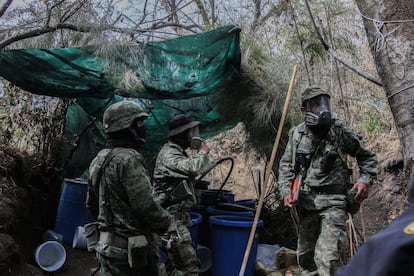
To synthesize the drug, Miguel follows a three-step recipe. He refers to the chemical precursors needed for the formula as the “liquids.” How many does he use? He remains silent for a few seconds while he counts with his hands: “10, plus the base.” Of his “suppliers,” however, he doesn’t say anything.
- Chemical precursors
- Also known as drug precursors, these are substances used in the production of other substances by means of the chemical compounds they contain.
At the end of the process, he puts the thick mixture to dry on a cloth. From there, some lumps come out, which are passed through a home blender until a white powder remains. A kilo of Chinese precursors costs the cartel — according to the DEA — about $800. From there, four kilos of fentanyl come out. The profit can be between 200 and 800 times what they paid. That is, from $160,000 to $640,000 per kilo. This is why, when demand is high, up to 14 people get together to work.
Sinaloa, a state in northwest Mexico, is one of the hot spots for drug production that has put the United States in check. Most of the Mexican Army’s seizures are concentrated here. The area of Culiacán and its surroundings — one of the epicenters of the narcoculture empire, with its cult of organized crime as a lifestyle — is controlled by Los Chapitos. In February, Ovidio Guzmán — the youngest brother — was arrested. The drug traffickers’ order was, after that, to stop: don’t make noise, lower the volume. “Wait a little while.” So, Miguel has now put his laboratory on hold. He says that, at the moment, he’s peaceful with his savings. He trusts that there will be work again.

During the conversation, he refers again and again to la plebada, a Sinaloan slang term for “the guys.” He says: “I’m not upset with la plebada.” Or: “La plebada has its workers.” Or: “Sometimes, you have to do things with la plebada.” Finally, he speaks directly: “La plebada are Los Chapitos.”
He claims that he doesn’t work exclusively for them. He says that he has other clients who are discreet, businessmen who work effectively, “who move the kilos.” He prefers not to be too close to Los Chapitos. Because “if they tell you to kill a person, you have to go kill them. And my business isn’t to kill people, you hear me? My business is to work.” That’s why Miguel has his laboratory in the mountains. And that’s why, when he finishes the interview, he’ll leave in a hurry for his ranch. He doesn’t want to “have issues with la plebada.”
2. The addicts: an apocalypse in San Francisco
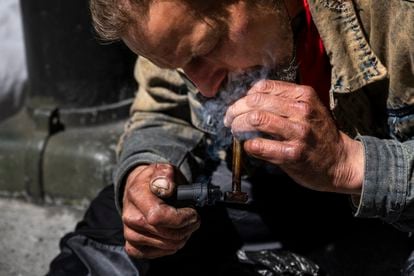
It’s 11:30 on another foggy day in the Tenderloin, a neighborhood in downtown San Francisco. With a bohemian past, the area has turned into an apocalyptic symbol of the post-pandemic city.
Joseph, 41, lives on these streets. Sitting on the floor, he reads a chronicle of the Ukrainian war in an old newspaper. He likes to know what’s going on in the world, he says. He doesn’t sleep much, almost always during the day, to avoid being robbed of the little that he has: a backpack and a garbage bag that he drags when he shuffles, because it’s difficult for him to walk upright.
He came to San Francisco in 2016 from Chicago. He lived with a girlfriend in a downtown apartment. After breaking up with her, his previous addiction problems worsened and he ended up adding to the statistics of the 653,000 homeless people living poorly in the United States, 12% more than the previous year, another historical high.
Joseph’s newspaper also serves to wrap half-a-gram of fentanyl, some crack, aluminum foil and a lighter. In a secluded alley, he pulls out a pipe, lights it and inhales. He doubles over and sways. A couple of minutes later — back from somewhere on the edge of consciousness — he confesses: “I used heroin before. This is much worse. I want more and more. And I need it every 40 minutes. If not, I go crazy.” According to neuroscience, its effect is stronger and shorter, causing its addicts to live with the anxiety that Joseph describes. “The worst thing is that it’s never like the first time.”
There are hundreds of people who, like him, are looking around the Tenderloin district to feel what they felt that first time. Almost all of them have a long history of drug use behind them. Many say that they ended up using fentanyl due to some setback in life: an illness, a loss of a loved one, mental health problems… They are mostly white, extras in the third act of the opiate tragedy, which began in the 1990s with prescription pills called OxyContin. This continued with the resurgence of heroin at the beginning of the century. Since the middle of the last decade, the tragedy stars fentanyl, which swept all the others away.
- OxyContin
- Brand name for oxycodone and a source of wealth and notoriety for the Sackler family.
Addicts subsist in downtown San Francisco among tents, wheelchairs, sewers and garbage. In the morning, they score. At midday, they grab a juice, or something to eat. Some form groups to be protected. They don’t say much that’s intelligible to each other, but they nod along together. When they’re in one place, they lie around in any way possible, with their heads against the pavement. When they’re on the move, they smile at strangers, say “thank you” and “good morning,” clinging to the humanity that good manners can offer.








Every now and then, someone shouts “overdose!” A crowd runs into the street, armed with naloxone inhalers. According to a study by Massachusetts General Hospital, what contributes to making fentanyl a very dangerous drug is that the consumer of too high an amount stops breathing before even losing consciousness.
- Naloxone
- Narcan, in its commercial formulation, acts on the same neuroreceptors as fentanyl, deactivating its fulminant effect.
When the overdose is a false alarm, the resurrected ones slip away at a brisk pace, without time to thank their luck. Nobody wants to end up in the hospital: a night without fentanyl is worse than death.
Given this scenario, most stores around the area have closed. On the corners, the dealers ensure the smooth running of their business, without taking their eyes off of each other. It’s easy to distinguish them: they don’t look like they’re on drugs.
The orderliness and safety of the residents is the responsibility of volunteers from associations such as Urban Alchemy, which receives funding from the San Francisco City Council. The police have other priorities. After three months of visiting the Tenderloin district several times a week, it’s inevitable to think that the city has handed the neighborhood over to drug addicts. Life is organized around them.
In 2021, Mayor London Breed — of the Democratic Party — declared an emergency, asking the state of California and the federal government for help. Since then, the California Highway Patrol and the National Guard collaborate with local agents in the pursuit of drug mafias. In November, they made an effort to clean up the streets on the occasion of the Asia-Pacific Economic Cooperation (APEC) Leader’s Meeting, which resulted in a commitment by President Joe Biden and Chinese President Xi Jinping to cooperate more effectively to tackle the crisis. But it was just a mirage. The world leaders left and the apocalypse returned.
3. The precursors: from a laboratory in Wuhan to the world
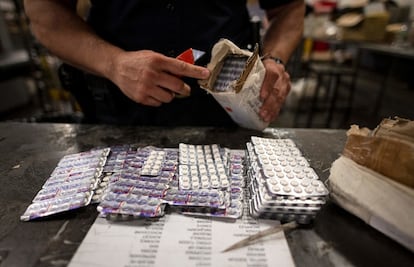
On December 15, 2021, a self-made Chinese businessman became one of the most wanted men in the global fentanyl business. His name is Chuen Fat Yip. With brown eyes, weighing 150 pounds and standing at 5ft 6, the 70-year-old man was born in Wuhan. The U.S. Department of State is offering a $5 million reward for any information leading to his arrest.
According to Washington, Chuen runs a drug trafficking organization that operates in mainland China and Hong Kong. He also controls a group of companies that sell chemical compounds and precursors. One of them is Wuhan Yuancheng Gongchuang Technology.
The company has an active website, where it says they export to more than 20 countries. There’s a phone number. On the other end of the line, a man’s voice sounds. When asked about the sanctions, he excuses himself: “I’m just a salesman…” He’ll then stop responding to messages.
Chuen defends his innocence. He affirms that the case is based on “untrue information” circulated by American reporter Ben Westhoff. This is from a 2022 statement that his company sent to a Texas court, where — among other things — he is accused of allegedly agreeing to ship 24 kilograms of 4-ANPP, a precursor to fentanyl.
Westhoff is an investigative journalist. He was working on his book Fentanyl, Inc. (2019) when he came across Chuen. He searched the internet for advertisements for precursors and found a copious amount of ads from companies in China dedicated to their production and export. Almost all paths seemed to lead to the same matrix: Yuancheng.
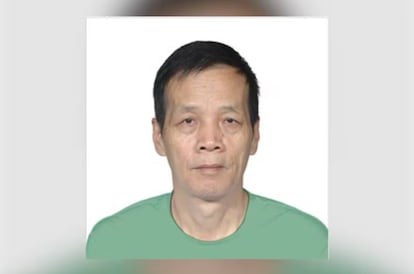
It was 2017: producing and selling these precursors was still legal in China. Part of the problem has always been that they weren’t prohibited. They contributed to the deaths of tens of thousands of people on the other side of the world, even though they did no harm in the West. One of the most up-to-date sources of official information is a recent documentary that was broadcast on Chinese state television. The film claims that, in China — with one of the most severe anti-drug regulations in the world — the abuse of fentanyl is “practically unknown.” Since 2017, the People’s Republic has resolved 397,000 criminal cases related to narcotics, but fewer than 10 were linked to the opiate.
The documentary acknowledges the difficulty of keeping track of new variants. In 2013, there were already 13 types of fentanyl. Ten years later, there are more than 50 in China alone. Since 2015, Beijing has been increasing the number of controlled substances each year.
NPP and 4-ANPP entered the list of persecuted compounds in 2017, so online sellers in China began offering Westhoff legal substitutes. In a phone interview from St. Louis, Missouri, the journalist sums it up like this: “There are a lot of different chemicals that can be used to make fentanyl, and they’re legal in China.”
In May 2019, Beijing took the step of banning all analogue substances. Previously, in the first years of the epidemic, much of the fentanyl that arrived in the United States came from the Asian country, in packages sent by regular mail. When the screws of its production in Asia were tightened, Mexican drug traffickers (as well as laboratories in the United States or Canada, where the largest one discovered to-date has just been dismantled in Vancouver) quickly learned how to cook it. Still, they continued to need the ingredients for the recipe from China: the famous precursors.
In February 2018, Westhoff posed as a buyer and visited Chuen’s company in Wuhan. In addition to being famous for being the birthplace of Covid-19, the city is the capital of Hubei province — one of the country’s chemical hubs — as well as the headquarters of several companies sanctioned by the United States for their links to fentanyl.
China is the world’s largest producer of pharmaceutical ingredients. But it wasn’t always like this. The change came with the economic reforms pushed by Chairman Deng Xiaoping. In 1985, when China began to admit foreign capital, one of the first pharmaceutical companies to arrive was Janssen, a Belgian firm. Its founder, Dr. Paul Janssen (1926-2003), was a lover of China and became one of the first foreign visitors to the terracotta warriors of Xi’an. He was also the chemist who synthesized fentanyl in 1959, which quickly became one of the most widely-used opioid pain relievers.
- Janssen
- Part of the giant Johnson & Johnson, which patented one of the first vaccines against Covid-19.
On the day Westhoff visited, there were hundreds of salespeople scattered throughout Chuen’s offices. It was cold. The two men spoke briefly. A few months later, he would call to tell him that he was a journalist. In his book, he clarifies that Yuancheng didn’t sell merchandise considered illegal in China, but that everything indicates that Chuen was aware that the precursors were used to illegally manufacture fentanyl.
Yu Haibin — deputy director of the National Narcotics Control Commission and one of the leaders of the anti-drug fight in China — claims to be aware of the Chuen Fat Yip case. “So far, we’ve found no evidence that he or his company has violated the law in China,” he says, during an interview with EL PAÍS in Beijing. “If the United States could provide us with legally-obtained evidence, we could take legal action under Chinese law,” he adds. “We’re open to cooperation.” The issue reflects the underlying problem. In the middle of one of the worst moments of geopolitical tension between Washington and Beijing, the White House continued to impose sanctions against dozens of Chinese companies and citizens in 2023. But Chinese investigations reveal that the equipment and substances involved “are not controlled” in his country, Yu cations. That is, the sale is not prohibited.
In November, fentanyl was one of the key issues of Biden and Xi’s meeting in San Francisco, which resulted in China’s commitment to do more to resolve the crisis. Yu explains that among the next steps to be taken will be “comprehensive cooperation that includes the exchange of intelligence information, the investigation of [specific] cases and technical exchange.” At the moment, it’s unclear if this will be enough. The DEA has already observed an increase in trafficking of precursors from India.
4. The ports of Mexico: life or death in Manzanillo

The bodyguard made a gesture to her from the passenger seat and she managed to crouch down as best she could in the back of the car. Then, a rain of bullets began: 36 shots welcomed her as mayor of Manzanillo, Mexico.
Griselda Martínez leaned over the back of a boy sitting next to her. Their lives depended on the boy staying calm. “If he gets desperate and gets up,” Martínez thought, “they will kill us both.” The bodyguard shot at one of the two attacking motorcycles. He was hit in the face, but he also managed to hit the shooter. The driver also opened fire, before the motorcycles fled.
It was June 2019 and Martínez had only been mayor for seven months in the main port city along the Mexican Pacific, the gateway to Asia for almost a century. Tons of food, clothing and car parts pass through the port every day. And, for more than a decade, so have the precursors that arrive from China. In April, the Mexican Navy discovered 11,500 bottles of tequila that actually contained almost 10 tons of the liquids that have turned Manzanillo into a tinderbox.
The mayor is a petite woman. Before the interview, two bodyguards appear. Then, four more. The 55-year-old has 15 in total. They have accompanied her since the assassination attempt. During all this time, she has not set foot in her house. First, she spent a year sleeping in a Navy barracks. Then, two more at the City Hall. Since 2022, she has lived in another municipal building.
When Martínez became mayor, the police department was infiltrated to the bone by the two criminal groups that control the area: the Sinaloa Cartel and the Jalisco New Generation Cartel, the two most powerful mafias in Mexico. The two operate as multinational crime syndicates, with structures that go from the top to the bottom: their brand is printed on the small bags of cocaine or meth that the dealers sell. The Sinaloa logo is an apple. The one from Jalisco is the group’s initials: CJNG.
When she came into office, Martínez fired more than 200 police officers out of a total of 300. The agents had even been killing each other, because each one worked for a different side. Navy Captain Fernando Winfield — head of the police — remembers that, a couple of years ago, he arrived with his men to a house where a murder had been reported. Upon entering the living room, the deceased was seated with a bullet in his head. He was one of his former agents. The pressure put on new ones is difficult to bear: the mafias offer them money, look them up on Facebook and threaten them.
The chain that links corruption in the port, the entry of chemical precursors and violence has even been recognized by the president of Mexico himself. “We’re going to clean up the ports and customs in the country,” Andrés Manuel López Obrador promised, in the summer of 2020 from Manzanillo. He ordered that the job of securing the ports be handed over to the military. In the last two years, four customs officials have been killed in the Port of Manzanillo.
The Navy declined to provide information or access to the port for this report. The mayor explained that, within the facilities, there are traffic lights that mark which containers are inspected and which are not. “It’s random, a matter of luck.” All these factors combined make detecting these products — which come in quantities that often don’t exceed a few liters — seem like finding a drop of oil in an ocean.
With 160,000 inhabitants, Manzanillo was, until not so long ago, the quiet fishing town where Bo Derek filmed the movie 10, in which she played the perfect woman at the end of the 1970s. Those golden times are over, although tourism — mainly Mexican — still visits the hotels, which are a little worn out. The city is within one of the smallest and least-populated states in the country. It used to be sold abroad with the slogan: “Colima, the place where nothing happens.”
But then, things started happening. In 2010, former governor Silverio Cavazos was shot to death outside his house. The importance of the port — with the expansion of chemical drugs, its placement along the route to the north through the Pacific Passage and the fact that it is surrounded by Jalisco and Michoacán, two states dominated by organized crime — have pushed it to its limit. For years, Colima has usually topped lists of the most violent territories in Mexico. In 2022, it repeated its ranking as the place with the highest homicide rate in the country, which reached its historic record in 2019. Since then, the numbers have only decreased slightly. There are almost 100 violent deaths a day in Mexico.
5. Export: the law of the border
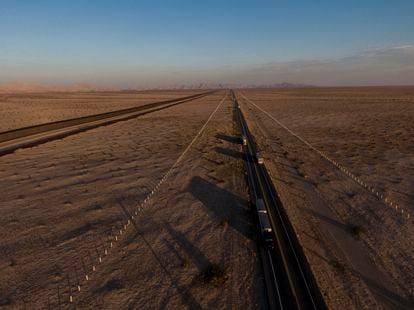
Pedro, 32, is sitting in a plastic chair in a hardware store in Culiacán. He’s from the state of Durango. His real name is not Pedro and he doesn’t want his true identity to appear in the press, either.
A little over a year ago, he began “exporting” fentanyl pills to the United States. However, after the violent arrest of El Chapo’s youngest son and his subsequent extradition to the United States in September, he is heeding Los Chapitos’ order to slow down. As a result, he’s back to marijuana and meth. Better not to risk it. “Right now, if people here catch you with fentanyl, you’re going to get screwed. You, your mom, your cousin, they’ll kill them all. Even the dogs will get killed.”
He says that, before the break, he moved a million pills a month with his partners. Always the blue ones: “the chingonas.” They bought them for $2 “from a comrade here” and sold them for $15 to “another pocho comrade there.” There being New York. Deducting expenses, he calculates that he gets $5 from each pill that’s distributed, removing the “large part” that the pleba (Los Chapitos) take. The biggest expense, however, is transportation. “Los Angeles, Kansas, New York. The higher you go, the more expensive.”
- Pocho
- Americans of Mexican descent.
The fentanyl that enters the United States from Mexico comes in powder or, increasingly, in the form of fake pills, which are camouflaged as commercial brands such as Xanax, Vicodin or OxyContin. Drug traffickers press them with machines that they also buy from China. The street price of one of Pedro’s pills is around $20 in New York.
The trafficker makes it clear that the most difficult thing is to cross the border. According to U.S. authorities, more than 90% of fentanyl enters the country via official ports of entry, hidden in private vehicles or cargo trucks. In 2018 — according to data from Customs and Border Protection (CBP) — 600 kilos of the substance were intercepted. In 2022, the amount rose to 7,200 kilos. Two milligrams are enough to kill a person.
Pedro uses big trailers, or “worms,” as he calls them. He says that he doesn’t know where exactly the drivers hide the drugs, but that the best thing is to take the truck when it’s loaded “with food, cans of beans, chili, or car parts.” The goods are thus better disguised when going through X-rays, the use of which the Biden administration is promoting. He’s proud, because, as he assures EL PAÍS, the border patrol has never caught one of his people.
The cartel takes advantage of the holes in the border. It also pays hefty bribes to the authorities. One of the charges against El Chapo’s son details how, to guarantee a shipment, he organized a bribery network from Culiacán to Tijuana. That was Pedro’s route, along the Pacific corridor. “Just from here to the border,” he clarifies, “you spend about $30,000 in pure bribes between the police, the military and the Attorney General’s Office. In the United States, if they catch you, you go to jail, but here, in Mexico, you can settle it with a fine.”
There are different rates. You don’t pay the same to pass a checkpoint (without being checked) as the amount you have to pay in case someone is detained. “[In that case], they’re going to take $200,000 or $300,000 from you. That’s business,” he shrugs, like someone detailing the rules of a board game.
Once the shipment has passed, there’s another delicate moment. In one of the accusations against Guzmán, it’s described how two of his men had to move more than 20 kilos of fentanyl that they had stored in a hotel room in Los Angeles. The staff smelled something strange, so they ended up burying the merchandise in the backyard of a house. “What happens,” explains Pedro, “is that, sometimes, you arrive in Los Angeles and you have to change trucks to continue. So, you have to hide it in an office and wait.”
The most common locations for “offices” — according to Guzmán’s summary — are southern California, El Paso, Texas, and Phoenix, Arizona. From there, the cartel’s American distribution network enters the scene. “The pochos are the ones who have contact with the güeros,” says Pedro. “They sell wholesale, they have their clients, their dealers. Whites, Blacks, Puerto Ricans… you get me?”
6. The dealers: supply and demand
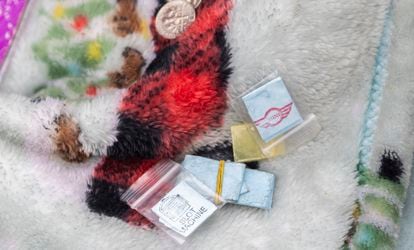
Until very recently, MAC was one of the last links in this supply chain. He’s a small-time dealer who asks that his initials be used and that the location of his interview with EL PAÍS not be revealed.
He sold fentanyl in Santa Cruz, 75 miles from San Francisco. “I bought it from Hondurans in the Tenderloin, or in Oakland,” he clarifies. “They control the market there. I got an ounce (28.34 grams) for $400. Then, I sold each gram in Santa Cruz for $50. Also, 100 milligrams for $10, or a quarter for $20. It was a big business. I used to make 1,500 bucks a day.”
MAC says he himself ended up hooked on fentanyl after being prescribed OxyContin after surgery. The bulky man lost his job and became a dealer. That’s when, he says, his hell began. “Every week, I got into fights and there were a lot of robberies. Overdoses were the order of the day. Many people died. I carried Narcan myself. I sold, but I also tried to save lives.”
At the time of the interview, MAC had been trying to detox for two weeks, tired of a lifestyle that will either send him to prison, or end up killing him. “Fetty” — as it’s known in street slang — is an extremely dangerous drug when handled: accidental ingestion can be fatal. “In my opinion, that makes business easier,” MAC says. “The cocaine or methamphetamine market is controlled by cartels that find fentanyl very dangerous. If you’re willing to take the risk, it’s easy money.”

On the streets, sellers like MAC borrow names from commercial brands or cultural references for their stationery — such as “Mini,” “Scooby Doo,” or “Fortnite” — to make their offer more attractive.
It’s not that fentanyl needs much help selling, warns journalist Sam Quinones, author of the book The Least of Us (2021). In it, Quinones reconstructs how the drug arrived and how it spread throughout the United States. “It entered around 2014 through the Midwest, then it came by mail from China. In just a few years, the plague spread throughout the country,” he clarifies, in a telephone interview with EL PAÍS.
- The Least of Us
- Perhaps the most comprehensive history of the current crisis.
The isolation of the pandemic — fatal for addicts in the process of recovery — and the epidemic of mental health problems that came with it contributed to triggering consumption. Between 2019 and 2022, overdose deaths grew by 99.8%, reaching 107,888.
In his book — which covers the epidemic up until mid-2021 — Quinones says that traffickers soon began to deal in fentanyl, which is much cheaper compared to other substances, such as cocaine, ecstasy, or even synthetic marijuana. “This is how thousands of people — those who didn’t die from an accidental overdose — ended up hooked on something they didn’t even know they were taking,” he explains. It wasn’t just a matter of earning more, but of increasing demand by manipulating supply. That’s one of the most pressing parts of the problem right now. And not only in the United States: in cities across Mexico, traces of the opiate have already begun to be found in substances tested at parties. At the moment, in Europe — where the authorities are closely monitoring the situation — the problem still isn’t as worrying.
For Quinones, one of the most unexpected consequences is the influence of this crisis on the recreational use of other drugs. In New York City, casual users go out partying with test strips — which cost a dollar, or are handed out for free and are legal in about 20 states — to detect the presence of fentanyl in the other drugs that they take. For their defenders, these strips are to this opioid epidemic what condoms were to the AIDS epidemic in the 1980s. As then, many people simply prefer not to take a risk.
7. Chemistry: the stronger the high, the bigger the hook
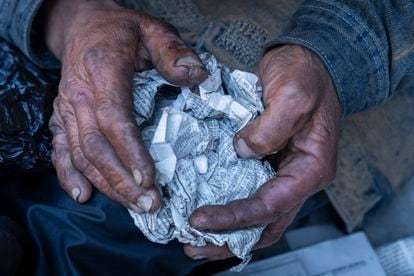
When it was patented for intravenous administration in 1959, fentanyl changed surgery forever. For many years, aware of its enormous power, Janssen — the inventor — only allowed its controlled distribution to anesthesiologists, a profession in which the first cases of addiction were recorded. It was like opening the gates to the field: at the end of the 1960s, there were already numerous variants with similar effects.
It was difficult for organized crime to find out about its existence, but when it did, it quickly learned to take advantage of the value of fentanyl as a drug from consumption on the streets — a drug that was more powerful, cheaper, more addictive… and also more lethal. So much so that the U.S. Department of Justice has identified several cases of inexperienced “cooks” who have died in Mexico, poisoned by vapors from precursors.
“It’s important to emphasize that, even today, it’s a good and useful analgesic from a medical point of view, for complex operations, or for terminally ill cancer patients,” says Lawrence Kwan, a professor at Stanford University and chief medical officer for St. Anthony’s Foundation Medical Clinic, an addiction treatment institution in San Francisco. “The problem is when it’s consumed uncontrollably.”
Fentanyl’s status as a valuable medical tool makes it difficult to combat: it simply cannot be made illegal. It’s not so easy to criminalize precursors, either: many of them are used in the manufacturing of cleaning products or commonly-used medications, such as ibuprofen.
Like any opioid, fentanyl creates anxiety and addiction; it just does so much more quickly. It only takes a few shots to get hooked. Overdoses are also more frequent.
In an interview with EL PAÍS, Julián — a 27-year-old addict, who is trying to get out of the hole in a rehabilitation center two hours from San Francisco — says that he has survived three overdoses. His brother didn’t have the same luck. That flirtation with death is a very common experience among fentanyl users.
Paradoxically, it’s a less destructive drug than others, such as meth. It has no consequences on vital organs such as the heart. Kwan says that at a cardiology conference he attended recently, he heard that “access to heart donors has improved as a sad side effect of the rise in opioid overdoses.” They weren’t lying: a study published in July 2021 by the American Heart Association confirms that the number of transplants has increased with overdose deaths.
With fentanyl, the classic dealer’s dilemma also arises: how to cut it without losing its strength? And new questions are asked: what’s the limit of purity that can be reached to encourage addiction, without destroying the clientele?
Before shipping the merchandise to the United States, Mexican drug traffickers seek answers to these questions on the streets, based on experiments that are detailed in documents from the U.S. Department of Justice. Miguel — the chemist who didn’t finish high school — recounts one such experiment. He says that once, one of the addicts took too much without realizing it. “Boom, he fell flat. Another guy went over and put salt in his mouth. And then, he was complaining: ‘Why did you wake me up?’”
In the open field next to the train tracks in Culiacán, where Miguel says he carried out his experiments, they also remember. “Sometimes people come asking, they want to get high for free,” says María, a regular, before smoking a pipe with methamphetamine. Amid the remains of clothes and syringes on the floor, she says she doesn’t even want to see fentanyl: “That shit kills you.”
8. Harm-reduction: panic in the needle district
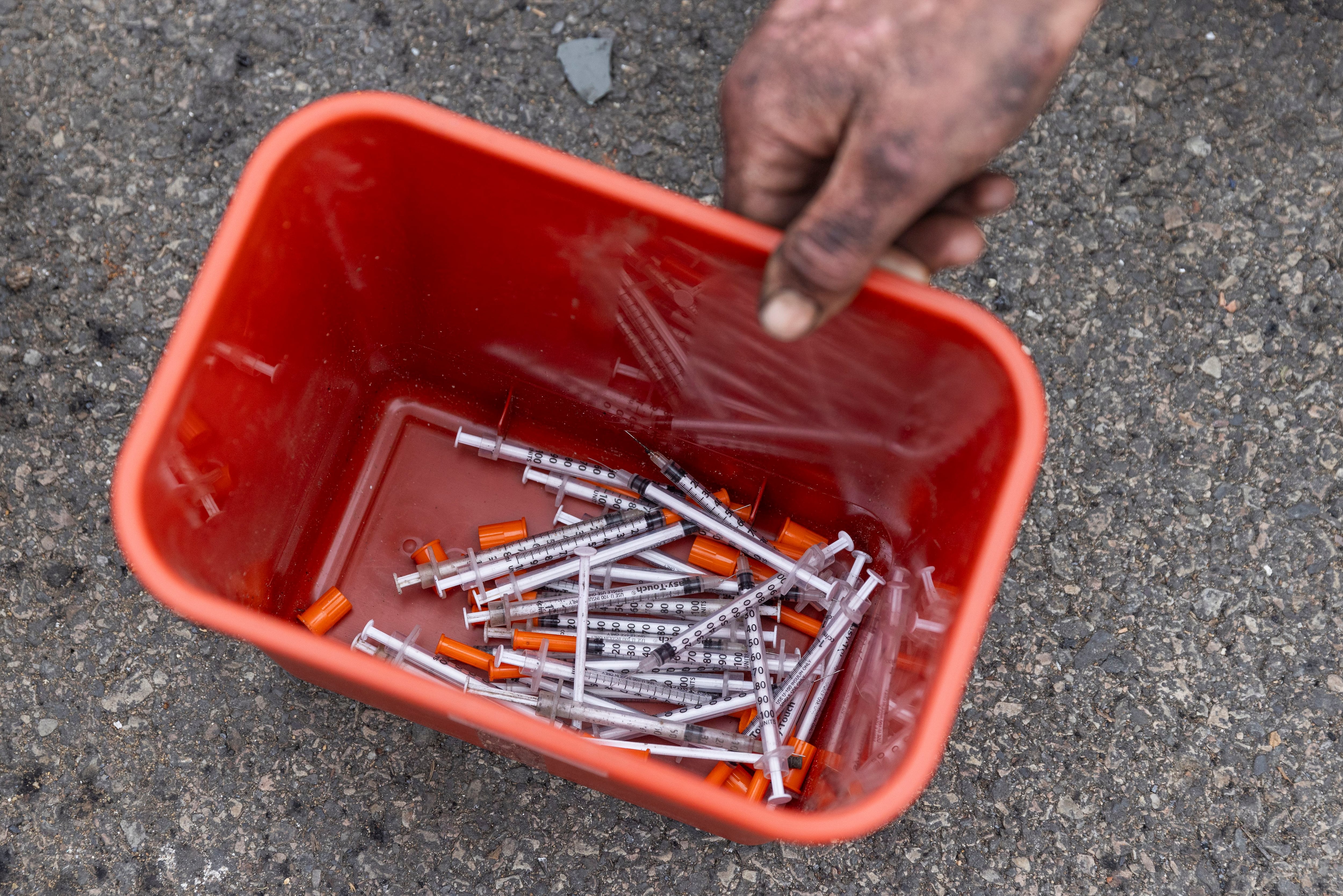
From his office in the White House, Rahul Gupta — Joe Biden’s anti-drug czar — directs Washington’s efforts to solve a currently unsolvable puzzle. He’s the first medical doctor to hold the position in the half-a-century that the War on Drugs has lasted. He’s pursuing familiar progressive “harm-reduction” policies in his role. In an interview with EL PAÍS, he details the three main points of this program, which is being implemented for the first time: “make Narcan widely available — since March, it can be purchased without a prescription — distribute syringes that prevent the spread of contagious diseases, and provide strips to detect substances such as fentanyl or xylazine in cocaine or ecstasy.”
- Xylazine
- An animal anesthetic they call “Tranq” or “the zombie drug.”
Xylazine is Gupta’s latest and most pressing concern. Consumers mix it because it lengthens and deepens the effect of fentanyl, by slowing down the heart rate, blood pressure and breathing. Since it’s not an opioid, it doesn’t respond to naloxone, which is why it’s already involved in 90% of the 1,413 overdose deaths recorded last year in Philadelphia. Not only that: forensic specialists have already detected it in corpses in all 50 states.

The size of the needles is at the center of the debate in the Kensington neighborhood of Philadelphia. A brick building houses the headquarters of an organization called Prevention Point. In this place — where workers prevent journalists from entering — addicts can take a break when the cold hits and change their used syringes. Kevin Bernard — the chaplain of The Rock, a Catholic center whose life is organized around a boxing gym (after all, this is the city of Rocky) — says that, because of this policy, the sidewalks “are flooded with needles.” “Stepping around them, people walk their dogs, children go to school. What those people do is a disgrace for Kensington,” he declares.

Bernard is a big man with a broken nose. A former boxer and a former police officer, he’s been here all his life — he knows the neighborhood like no one else. Once or twice a week, he guides an old van full of volunteers dressed in yellow vests. They talk to the users and, if anyone is encouraged, they put them in the vehicle and take them to their center, or refer them to places like Philly House, the oldest homeless shelter in Philadelphia. The president of the shelter, Phil Montgomery, explains that they have 240 beds. “From here, we divert them to specialized detox centers,” he notes.

In a location adjacent to The Rock, police officers from all over the country come to learn about how to detect when a person is under the influence of fentanyl. In exchange for some food, volunteers like 36-year-old Keith — who has been in Kensington for the last four years and lost a leg on these streets — undergo tests for about an hour, from having their pupils measured, to trying to walk in a straight line.
On the street, police aren’t used against consumption. “I’m an advocate for harm-reduction policies and I overcame my own addiction, but this is just too much,” sighs Brooke Feldman, a drug reform activist. He stands next to the train tracks, in what remains of a tent colony. “Seeing how they shoot up in front of an agent, I don’t know… This has to do with human behavior. If they don’t encourage you to change, you don’t change. The [permissive environment] isn’t good for anyone.”
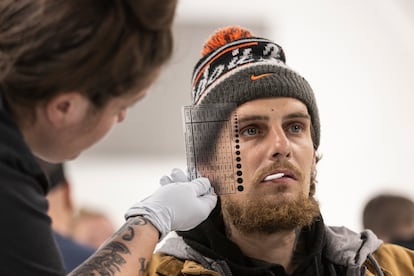
Feldman goes out on patrol with Ronnie Kayser, who founded a women’s organization that helps addicts — Angels In Motion (AIM) — after losing a brother to an overdose. They’re joined by Mary Lou Toewe, who’s part of the board of directors of AIM and the mother of a boy who “has been on and off drugs for years.” They drive a car loaded with water and some bags of food that they distribute to addicts. They also carry an ointment for wounds caused by xylazine, which, when injected, causes bruises, makes the flesh necrotic and ends up leaving holes through which, in some cases, bone appears.

Detractors of harm-reduction policies — which can include the distribution of free tents to addicts — warn that these measures can act as magnets for addicts, who move to places such as the Tenderloin district or the Kensington neighborhood, so they can live their lives without problems. In San Francisco, Gina McDonald — a mother of one — explains that her daughter Sam preferred to exchange “the comforts of the family home” for the Tenderloin. “I didn’t allow her to take drugs in her room. In the area where we live, you cannot put up a tent, you cannot buy on the street. They would arrest her. In the Tenderloin, she can do whatever she wants.”
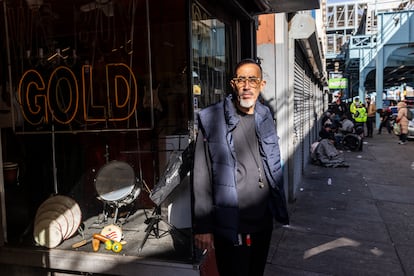
In Philadelphia, the big question is what the recent election of Democrat Cherelle Parker — the first female mayor in the city’s history — will mean. She campaigned on a tough-on-crime message, promising to ask the National Guard for help. Everything indicates that, in an election year, the cultural war between Democrats and Republicans will intensify even further on the fentanyl front. Conservatives blame the problem on the management of liberal cities and the calls to defund the police that followed the murder of George Floyd in 2020.
9. The political fight: “This is a war. Do something!”
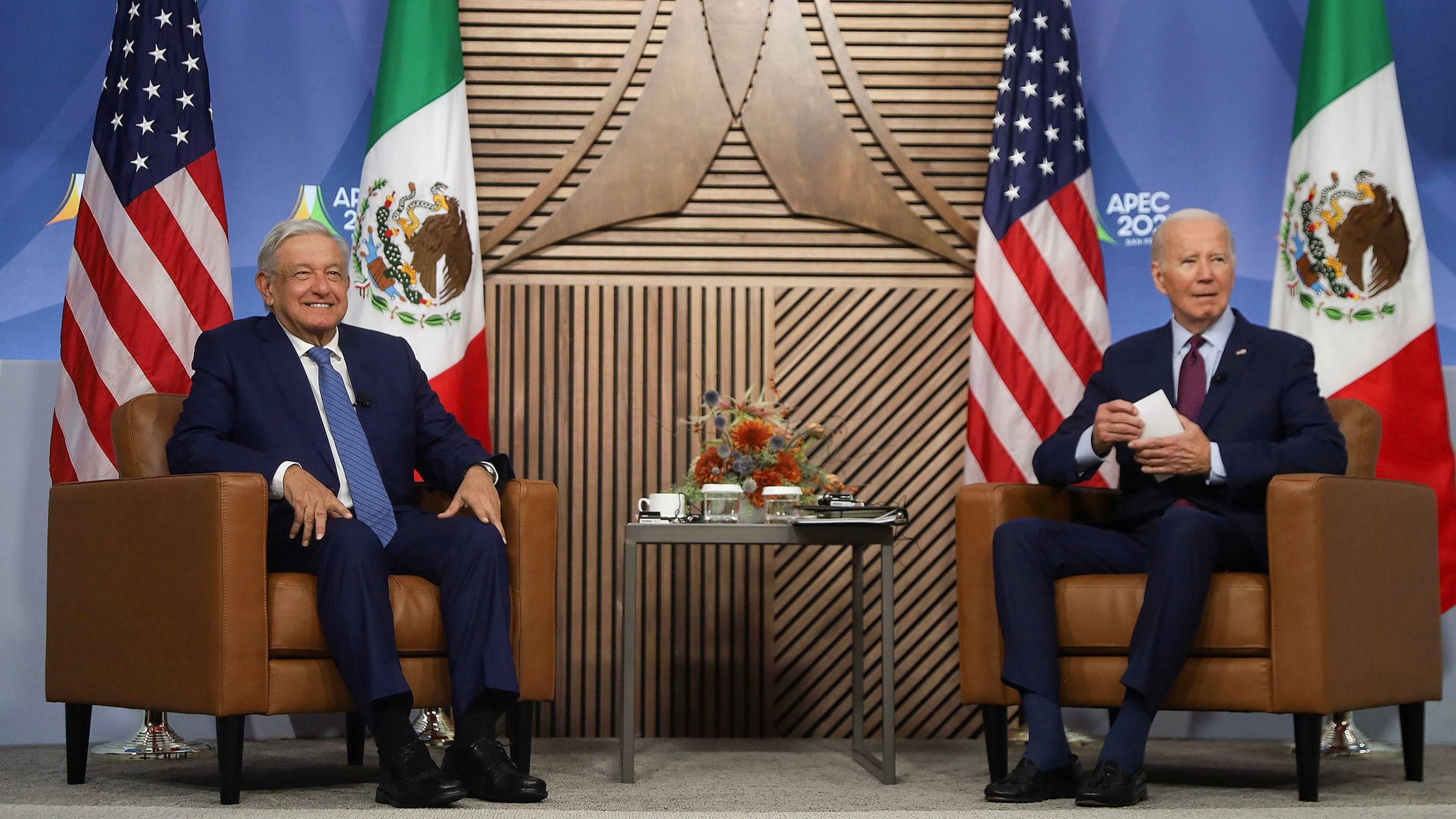
Michelle Leopold found out about her son Trevor’s death through social media. She knew that he used to smoke marijuana, but not that he took fentanyl. Everything indicates that he didn’t know it, either.
That night, Trevor and two friends bought four 30-milligram oxycodone pills and took them in his dorm room. Only one of them contained a fatal dose. According to the coroner, Trevor died a few minutes after consuming that pill. Hence, the friend who slept beside him that night did so next to a dead body.
Since November 17, 2019, his mother has turned her son’s room in Marin City — 20 minutes from San Francisco by car — into the operations center of her fight against fentanyl. Next to the bed where he used to sleep, there’s a photograph of the boy’s smiling face, with an accompanying text that reads: “Trevor Leopold, 18-years-old, victim of a homicide induced by fentanyl poisoning.”
Cases like Trevor’s have permeated American public opinion, thanks to the testimony of mothers such as pro-life advocate Rebecca Kiessling, who testified before Congress in February. She lost two of her children in 2020 to an accidental overdose of fentanyl, which she said “came across the Southern border.” “This is a war. Act like it. Do something!” she demanded of the congresspeople.
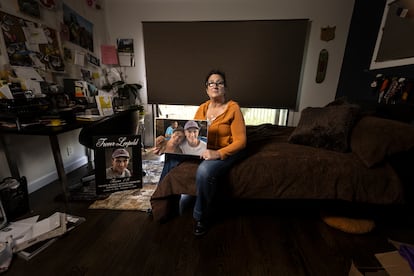
Members of the hard-right wing of the Republican Party have asked for the authorization of the use of bombings and anti-terrorist operations to put an end to Mexican drug trafficking, as was done against ISIS. They know that it’s politically and diplomatically impossible to carry out such a proposal, but fentanyl — which, as Republican candidate for the White House Nikki Haley recalled, has already killed more Americans than the number of U.S. troops who died in the wars in Vietnam, Afghanistan and Iraq combined — has also become a powerful weapon to inflame voters and attack Biden. They blame his management of the border for the deaths of these young people.
The issue is one of the biggest points of friction in the relationship between Mexico and the United States, especially since China banned its export in 2019 and production was left in the hands of drug traffickers. Mexican President López Obrador has defended himself by criticizing U.S. politicians who demand an invasion or wave the threat of blocking binational funds. He has also put his consular network into operation — the largest in the United States — to convince millions of voters of Mexican descent not to vote for candidates who use such rhetoric.
Until recently, López Obrador didn’t even acknowledge that fentanyl was manufactured in his country. He dismissed Mexico’s responsibility as a passage from China to the north. He even sent a letter in the spring to his Chinese counterpart, President Xi Jinping, asking for help. The response from the other side of the Pacific was clear: “The United States must handle its own problems.” Meanwhile, the White House — which has created an alliance of 130 countries to fight synthetic drugs (including Mexico, but not China) — is desperately trying to give the impression that it has the crisis under control.
Mexican authorities have dismantled 37 laboratories manufacturing fentanyl pills since López Obrador came to power in 2018. This is according to a statement from March 2023, made by Mexican Secretary of Defense Luis Cresencio Sandoval. Mexico has also defended itself by comparing the seizure figures with respect to the previous six-year term of Enrique Peña Nieto: 7,576 kilos compared to 532. The detail that’s omitted is that the crisis was unleashed during the years of this government, not the past one.
10. The recovery: veterans of the War on Drugs
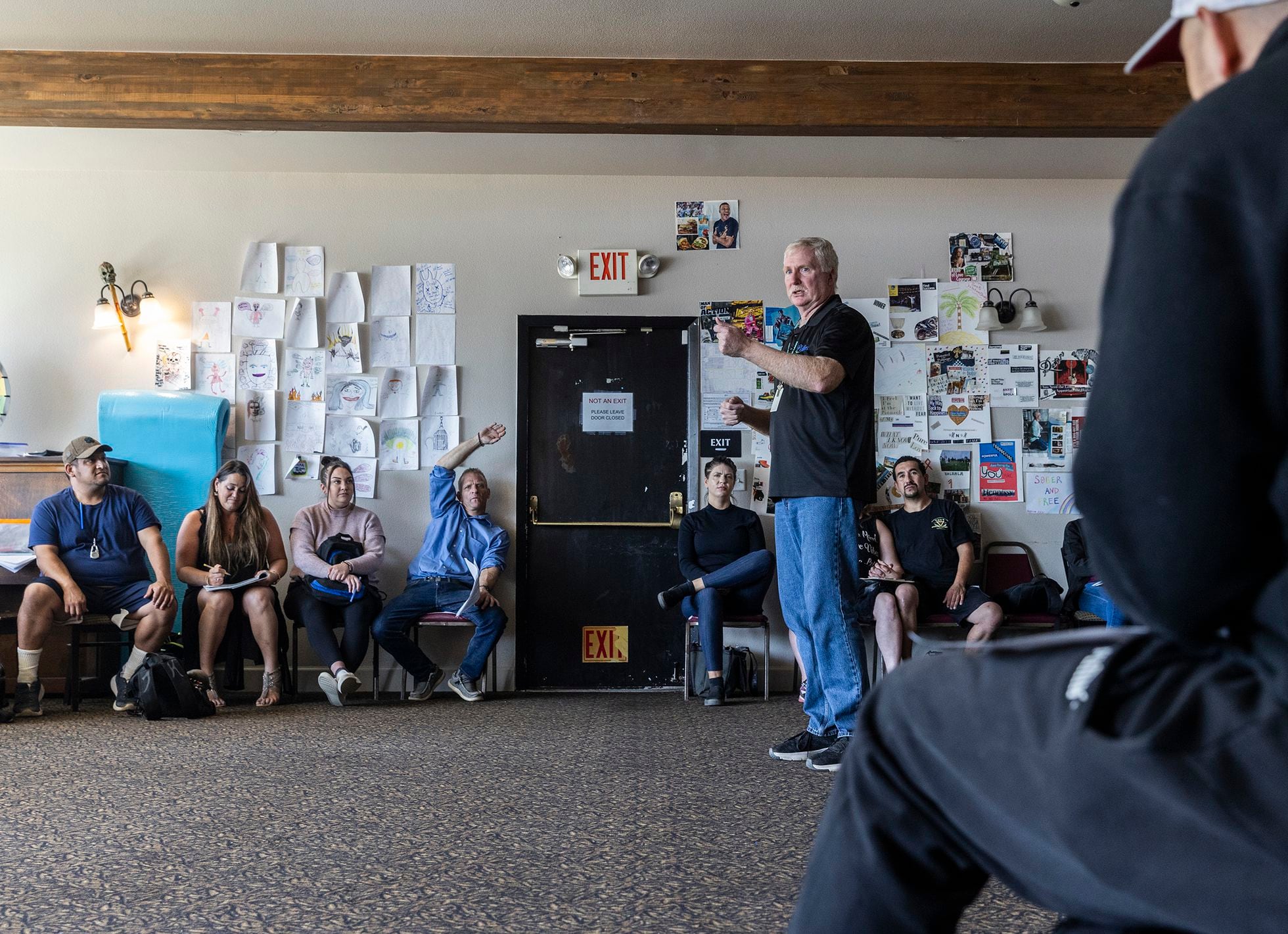
Morning has broken in front of San Francisco City Hall. Three young women — who have slept in the heat of a sewer — are lying around. They’re under the effects of the first dose of fentanyl of the day. When one of them regains some lucidity, she explains that her name is Abby, that she’s from Oregon, that she studied Fine Arts and that she shaved her hair to get rid of the lice. She doesn’t have a phone, she says, but she does have Instagram.
Her account is a story, in pictures, of the fentanyl crisis in the United States. A girl who descended into the abyss of addiction: in 2018, she showed herself to the world as a music lover who liked to skate. Then, she started smoking and growing marijuana. After that came the bad company, the pandemic, the loneliness, the death of her mother, the highs, the bad days and the streets.
Steve Adami spent two decades in and out of jails and prison accused of various drug crimes. When he left, he rebuilt his life, he obtained a master’s degree and even received an award for his academic excellence. He now tries to help other people quit drugs. Adami is the Executive Director of The Way Out, a recovery-focused homeless initiative of The Salvation Army San Francisco. He is in favor of harm reduction policies, but believes it is not enough. “If we only distribute syringes and pipes, our neighborhoods will be known for consumption. What message are we sending? Come to San Francisco, here you can get high and commit crimes freely.” He assures that the way out is to motivate those addicts to go to centers like his. “We have increased enrollment in our drug treatment programs by offering two years of free housing to those who complete treatment,” says Adami. “We are giving people hope and helping them reclaim their lives.”
There are an estimated 48 million people who, like Abby, suffer from addictions to some type of substance in the United States — a brutally individualistic country where it often seems that all it takes is one stroke of bad luck to lose everything. According to a study published in August, only one in five fentanyl addicts has access to a prescription for the most effective medications: methadone and, to a greater extent, buprenorphine.
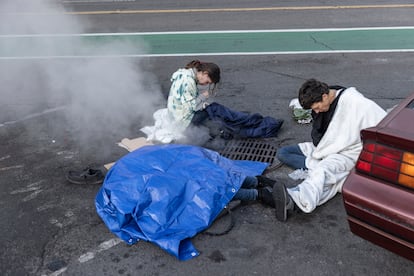
Improving access to these medications in a ruthless healthcare system is one of the challenges in facing an enormously complex crisis. According to Carl Hart — a psychologist at Columbia University and one of the world’s leading experts on the use of recreational drugs — adds that another solution is to legalize sites to take substances. He is a defender of responsible consumption. “Accidental overdoses would fall. The authorities mistakenly believe that this can be confused with encouraging consumption, but that’s not the case. It would save lives.”
The apostles of drug policy reform feel that the fentanyl crisis has, once again, demonstrated the failure of the War on Drugs, which was launched in 1971 by Richard Nixon. With a famous speech televised from the White House, the president — who ultimately resigned over the Watergate scandal — inaugurated an offensive that, according to some estimates, has cost the United States a trillion dollars. And, while that war was being fought beyond the borders — and while the guerrillas, paramilitaries, gangs, corrupt politicians, police and military personnel continued to enrich themselves with a formidable business — the origins of the worst drug crisis in the country’s history were revealed. It was incubated in the 1990s, at home, within the all-powerful pharmaceutical industry. This was all thanks to a family — the Sacklers — who have avoided jail by paying billion-dollar fines.
On that historic day in 1971, Nixon’s goal, he said, was to end opium consumption, which had spread among veterans returning from the Vietnam War. He couldn’t do it: in 1970, one in every 100,000 Americans died from an overdose, but by 2022 — at the height of the worst drug crisis that the United States has ever known — the figure has multiplied by 30. Meanwhile, the spiral of violence continues in Mexico: since President Felipe Calderón (2006-2012) took the military out of their barracks in 2006 to combat the cartels, murders have increased by more than 300%.
Behind those numbers are the lives that are on hold due to fentanyl. There are the Mexican farmers, who cook drugs in the mountains and do experiments with human guinea pigs. There are the traffickers who get rich, by sending truckloads of beans across the border. There are the mayors, who are threatened with death by the narcos. There are the Chinese businessmen and their precursor factories in Wuhan. And then, there are the dealers, the addicts, the volunteers and the mothers who have lost their children on the frontlines of the opiate war.
Credits
Translated by Avik Jain Chatlani.



